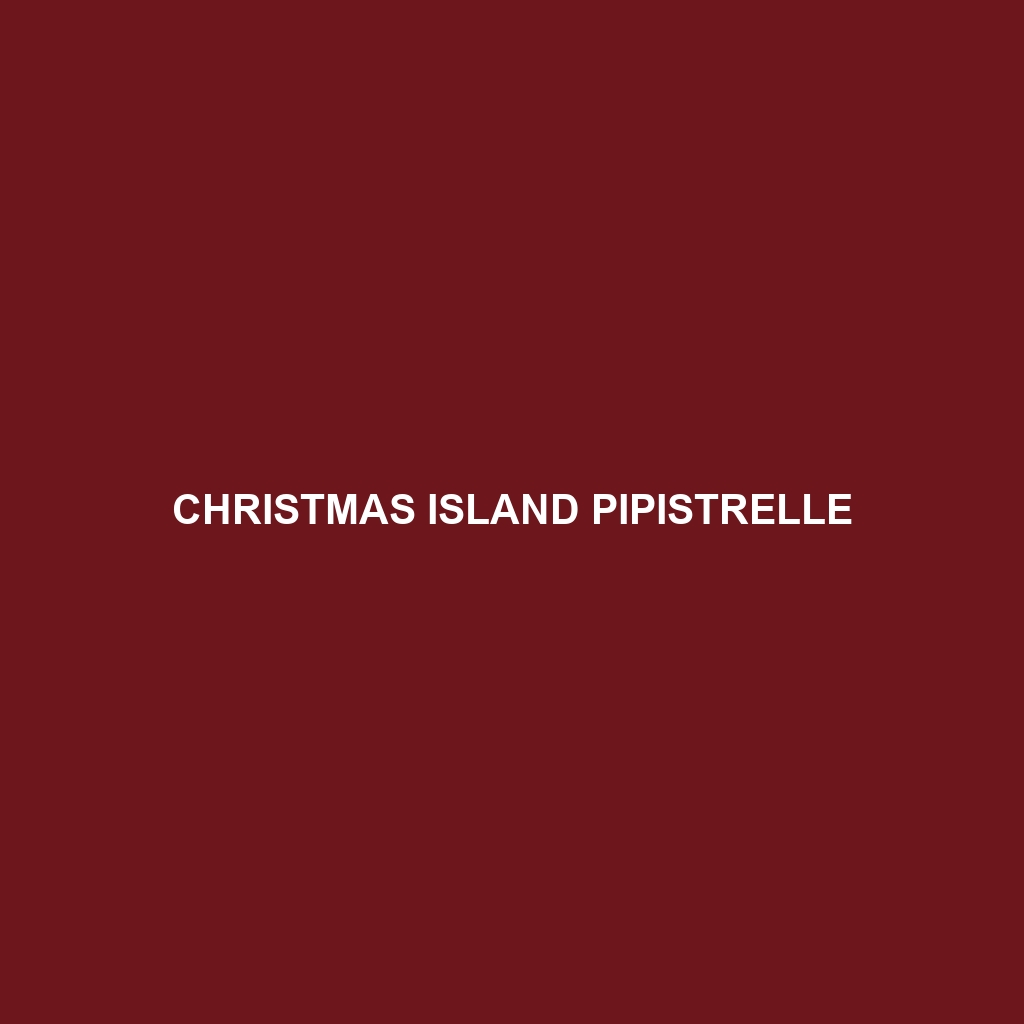Christmas Island Pipistrelle
Common Name: Christmas Island Pipistrelle
Scientific Name: Pipistrellus murrayi
Habitat
The Christmas Island Pipistrelle is primarily found on Christmas Island, located in the Indian Ocean, south of Java and west of Australia. This small island, characterized by lush rainforests and limestone cliffs, provides an ideal habitat for this unique species. The pipistrelle prefers to roost in caves and dense vegetation, relying on the humid, tropical environment for its survival.
Physical Characteristics
The Christmas Island Pipistrelle is a small bat, typically measuring around 8–10 cm in body length with a wingspan of approximately 24–28 cm. It features a sleek body covered in soft fur, which ranges from dark brown to reddish hues. Notable distinctions include its pointed ears and short, broad wings, which enhance its agility in flight. These adaptations enable the bat to navigate through the dense foliage of its forest habitat effectively.
Behavior
Typically, the Christmas Island Pipistrelle is nocturnal, becoming active at dusk when it leaves its roosts to forage for food. It is known for its agile flight, enabling it to catch insects on the wing. The bats usually hunt alone or in small groups, utilizing echolocation to locate their prey. Mating behaviors are often observed in the late summer months, contributing to their social structure and interactions.
Diet
The diet of the Christmas Island Pipistrelle primarily consists of small insects, including moths, beetles, and flies. These bats play a crucial role in controlling insect populations within their habitat. Their feeding habits reveal a preference for insects that are active at night, which are abundant in the tropical environment of Christmas Island.
Reproduction
Christmas Island Pipistrelles exhibit seasonal breeding patterns, typically mating during the warmer months. After a gestation period of approximately 30 days, females give birth to one or two young. Maternal care is significant, with mothers nursing their pups for several weeks. This reproductive strategy contributes to the species’ long-term survival in its specialized habitat.
Conservation Status
The Christmas Island Pipistrelle is currently classified as “Critically Endangered” on the IUCN Red List. Factors contributing to its declining population include habitat loss, invasive species, and climate change. Conservation efforts are crucial to preserving this unique species and its habitat.
Interesting Facts
– The Christmas Island Pipistrelle is one of the world’s rarest bat species, emphasizing the need for targeted conservation efforts.
– This species is known for its unique echolocation calls, which differ from other pipistrelle species, making it a fascinating subject for researchers.
Role in Ecosystem
As a predatory species, the Christmas Island Pipistrelle plays an essential role in maintaining the balance of its ecosystem by controlling insect populations. This bat species interacts closely with various plant and insect species, contributing to the overall health and biodiversity of the Christmas Island rainforest.
